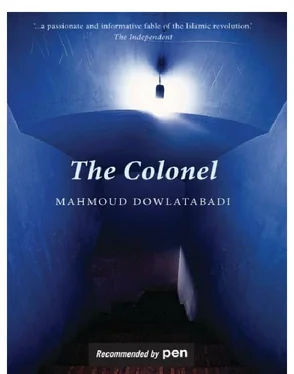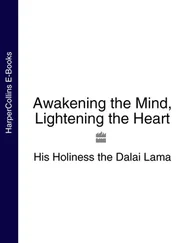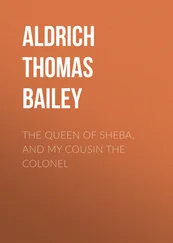Azeri : the Azeri language, a form of Turkish, is nowadays spoken mainly by the indigenous inhabitants of the north-western Iranian provinces of Azerbaijan and Zanjan, though Persian remains the official language there. Many Azeris migrated to Tehran and their language can be heard in much of the south of the city and in the bazaar. Tabriz, the capital of Iranian Azerbaijan, was Iran’s gateway to the west, through which many European ideas were imported. The Constitutional Revolution of 1906 was started by Azeris, and many of the founders of the Iranian communist party were also Azeris. Colonel Mohammad-Taqi Khan was an Azeri. Until the Russians conquered it in 1828 most of what is now modern Azerbaijan was Iranian territory.
Behesht-e Zahra : (‘The Paradise of Zahra’) the largest cemetery in Iran, located in the southern suburbs of Tehran. During the Shah’s reign, resistance fighters who were executed or killed in guerrilla fighting were buried there. It was the site of Ayatollah Khomeini’s first major rally after his return from exile in France in 1979. Behesht-e Zahra is also the final resting place of the ‘martyrs’ who fell in the Iran — Iraq War of 1980 — 88 and of political opponents executed after the establishment of the Islamic Republic.
Birjand : capital of South Khorasan province in eastern Iran, close to the Afghan border.
Dadviyeh : one of the first Iranians to convert to Islam during the lifetime of the Prophet Muhammad. After the death of the Prophet, he was betrayed and assassinated.
Dhofar : province in the south-west of the Sultanate of Oman, next to the border with South Yemen. In December 1973, a force of 3,000 Iranian elite troops went to help Sultan Qaboos bin Said put down a rebellion by PFLOAG (People’s Front for the Liberation of Oman and the Arabian Gulf), instigated by South Yemen, which housed a substantial Soviet base at the time. The Omani Army was trained and led by British officers.
Ferdowsi : (940 — 1020) Persian epic poet, author of the monumental 60,000-stanza Iranian national epic, the Shahnameh (Book of Kings). Ferdowsi was one of the first exponents of a new literary form of the Persian language, which had fallen out of use following the Arab invasion of Iran in the 7th century. The Shahnameh, completed in 1011, glorifies pre-Islamic Iran. It ends with the Arab invasion of Iran in AD640, regarded by Iranian nationalists as the nation’s greatest tragedy, in that it practically destroyed Persian culture and language. Ferdowsi’s verse is notable for employing almost no Arabic words.
Al-Hajjaj ibn Yousef : a draconian 8th century Arab governor under the Umayyad caliphate, responsible for many deaths, particularly of thousands of pilgrims to Mecca. He was later made governor of the Persian provinces, where he savagely put down a number of rebellions.
Khezr : In the Qoran Khezr, who has drunk the water of life and is therefore immortal, is the teacher of Moses. Khezr sees things that Moses cannot see or understand. Taking him on a journey, Khezr nearly sinks a boat, then murders a young man and, in a town where no-one will give them hospitality, he repairs a broken wall. Moses does not understand why, and protests. Khezr tells him that many seemingly malicious acts are beneficial: he has damaged the boat to prevent the crew from falling into the hands of a pirate kings; he has killed the boy to stop him bringing disgrace and danger to his parents, for God would give them a better son; the wall was to cover buried treasure left for the orphan of righteous parents, which was about to be exposed to thieves. In subsequent legends Khezr appears in various guises, at the last moment, often dressed in green, to guide or save the faithful when they are in trouble. In this novel, with hideous irony, Khezr Javid is the eternal and indestructible secret policeman, necessary for the survival of every régime, of whatever political hue.
Khiabani, Shaikh Mohammad : (1880–1920), renowned patriot from the early days of independent Iran. Active during the 1906 Constitutional Revolution, at the age of 30 he was elected as a member of the Democrat party to represent his native Tabriz in north-western Iran in the Iranian parliament. Revolting against the 1919 treaty that handed effective control of the country to Britain, he set up the breakaway republic of Azadistan (‘the land of liberty’) in Tabriz. The revolt was soon crushed, and Khiabani was put to death.
Kuchik Khan : (1880–1921), founder of the revolutionary Nehzat-e Jangal (Forest Movement), a guerrilla army that operated in the heavily wooded regions of northern Iran, attacking the Shah’s regime and the foreign (Russian and British) forces supporting it from 1914 onwards. He established the Socialist Republic of Gilan in 1920, which was crushed the following year by government forces. After the Islamic revolution the secular guerrillas retreated to the same forests.
martyrs’ memorials : shrines put up to honour both the soldiers who fell in the Iran — Iraq war and those Khomeini supporters killed in armed street clashes after the founding of the Islamic Republic. They are usually brightly lit small red tented pavilions, known as hejleh — bridal chamber — where the unfulfilled young martyr can find marital bliss. A photograph of the martyr, surrounded by lights, is the centrepiece. The shrines are left up for forty days.
Mossadeq, Mohammad : (1881–1967) Prime Minister of Iran from 1951 to 1953. A staunch defender of Iranian independence, he nationalised the country’s oil industry and ended British dominance in Iran. After the forced British withdrawal, the United States, with British help, organised a coup against Mossadeq. Shah Mohammed Reza Pahlavi, who had been forced into exile, returned and, with American help established a modernising régime, regarded by leftists as a dictatorship, that lasted until his overthrow in 1979. After Mossadeq was deposed in 1953, he was sentenced to 3 years’ solitary confinement in prison, followed by permanent house arrest on his estate until his death in 1967. He is revered as the only truly democratic statesman in the early history of independent Iran. A number of political commentators in the USA now say that it was a mistake to have overthrown him.
Pesyan, Colonel Mohammad Taqi Khan : (1892–1921) His aristocratic family came to Iran from the Iranian Caucasus after the Russians conquered it in 1828. His grandfather had worked closely with Amir Taqi Khan (Amir Kabir). After military training in Germany he was given a command in the Swedish-officered Iranian Gendarmerie on the western Kermanshah front in World War I. Although Iran was neutral, this sector of Iran was occupied by Russian forces. Pesyan fought them but lost and then took his men over to the German-Turkish side. From there he went to Berlin and joined the German air force. After the war he was appointed head of the Khorasan gendarmerie in NE Iran, with the rank of Colonel. As a nod to his European training, he was given the nickname Kolonel , which stuck. Even official documents referred to him as Kolonel .
Pesyan was on bad terms with Ahmad Qavam, the governor of Khorasan, who later became prime minister. The Colonel had thrown in his lot with Seyyid Zia, the fiercely nationalist post-war prime minister and in 1921 he arrested Qavam for failing to acknowledge Seyyid Zia as prime minister, and dismissed all his appointees. Seyyid Zia then appointed Pesyan as military governor of the province. Pesyan sent Qavam sent under arrest to Tehran. After the fall of Seyyid Zia, Qavam became prime minister. Pesyan rejected his appointees to the governorship of Khorasan and declared the province independent of the central government, going so far as to print his own currency. He attempted to finance the improvements he wanted to make to the province by taxing merchants, landlords and tribal leaders. He cleaned up the finances of the Shrine at Mashhad, which were being embezzled by the officials running it, and returned them to their proper charitable use. Totally honest himself, he led an austere life and encouraged education, including for women.
Читать дальше












